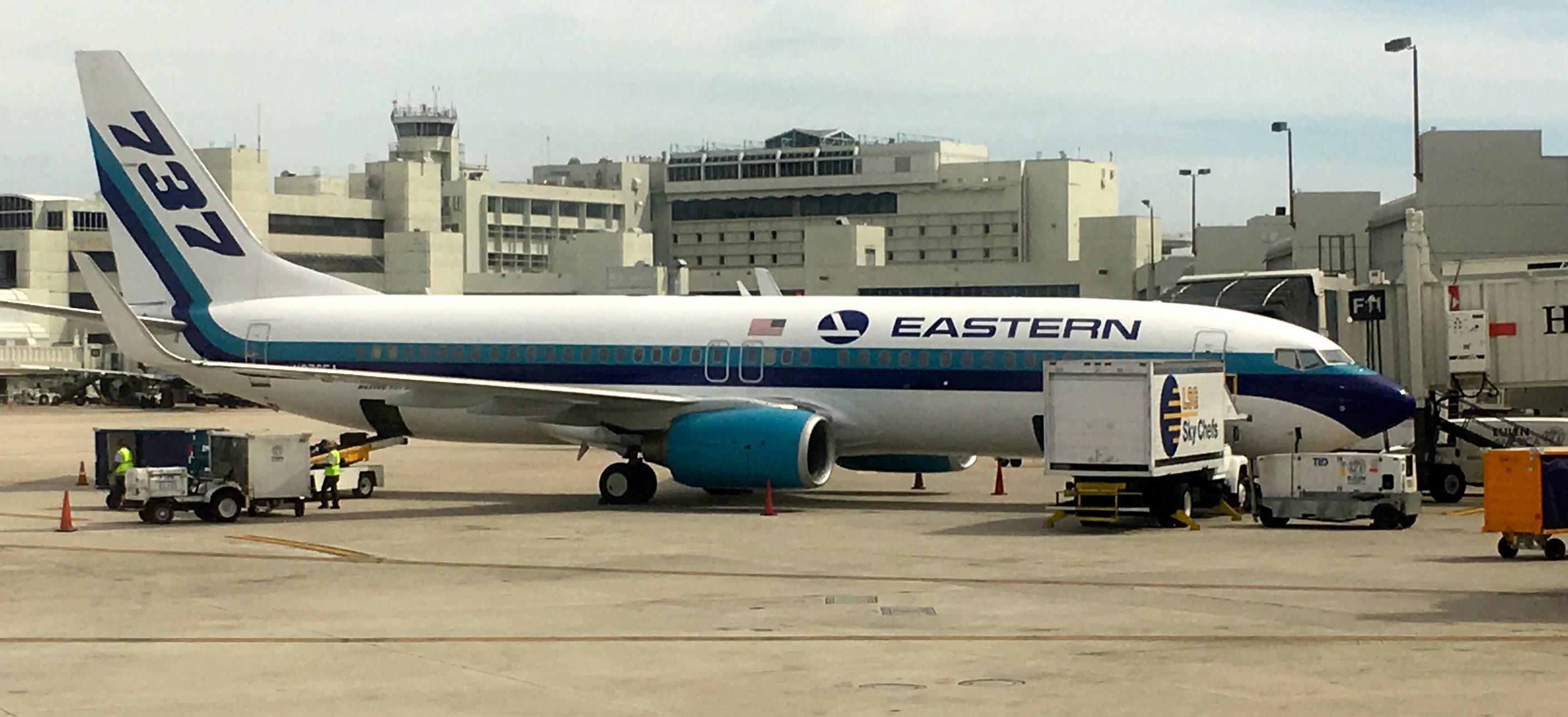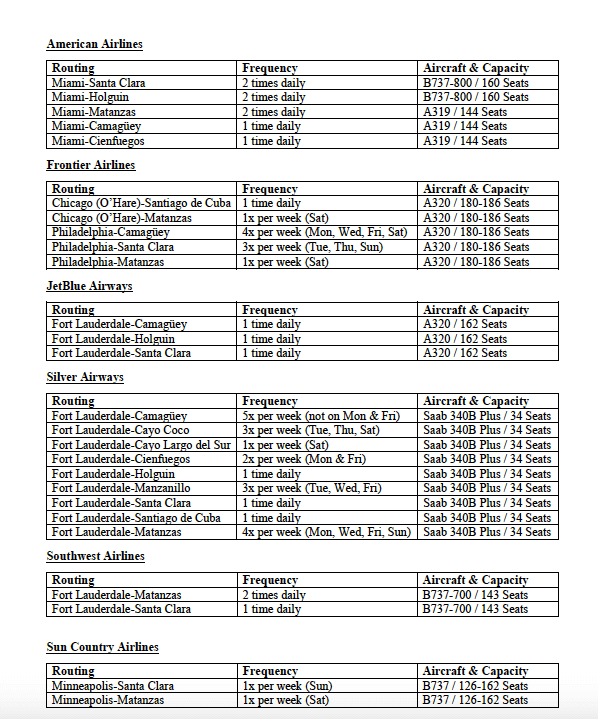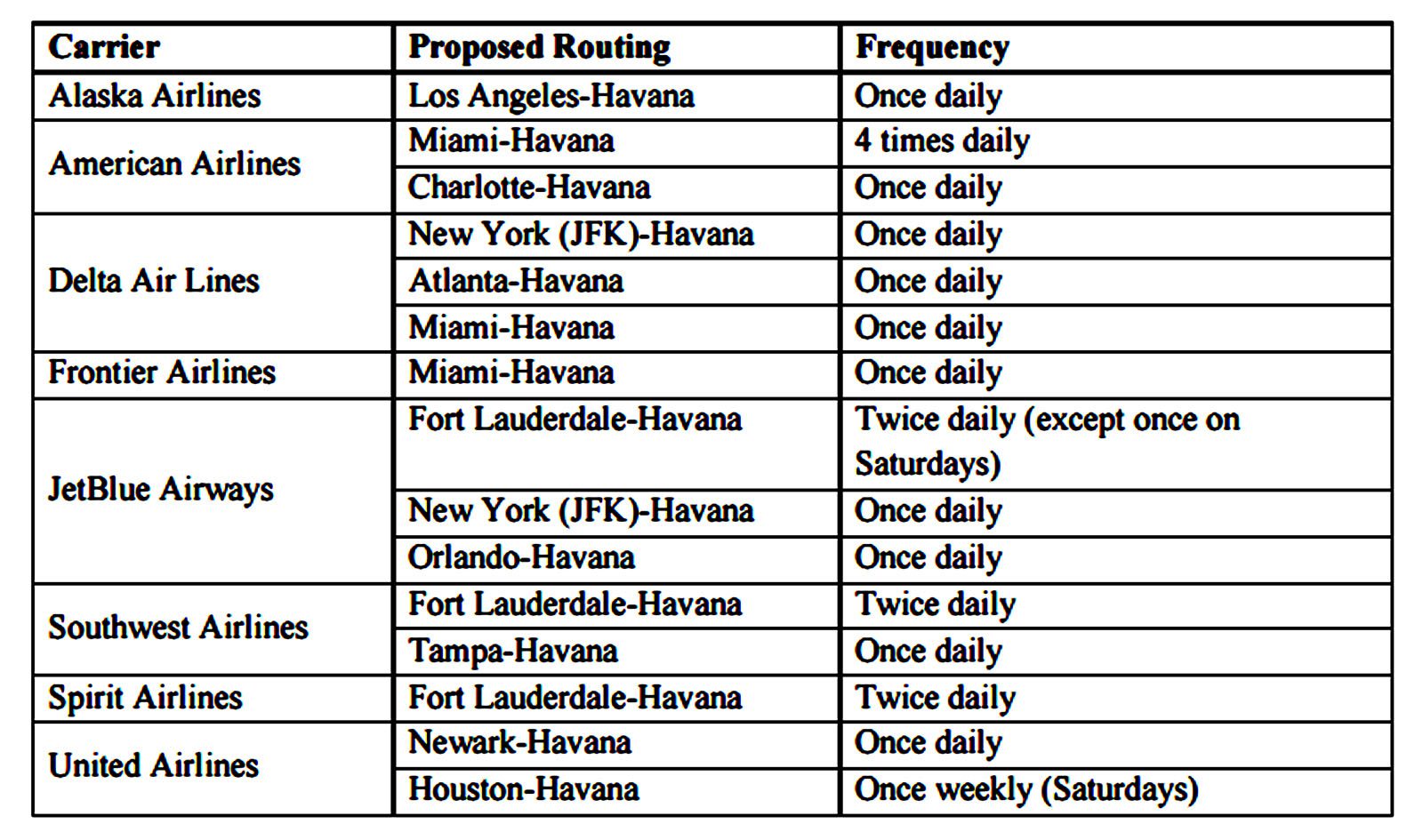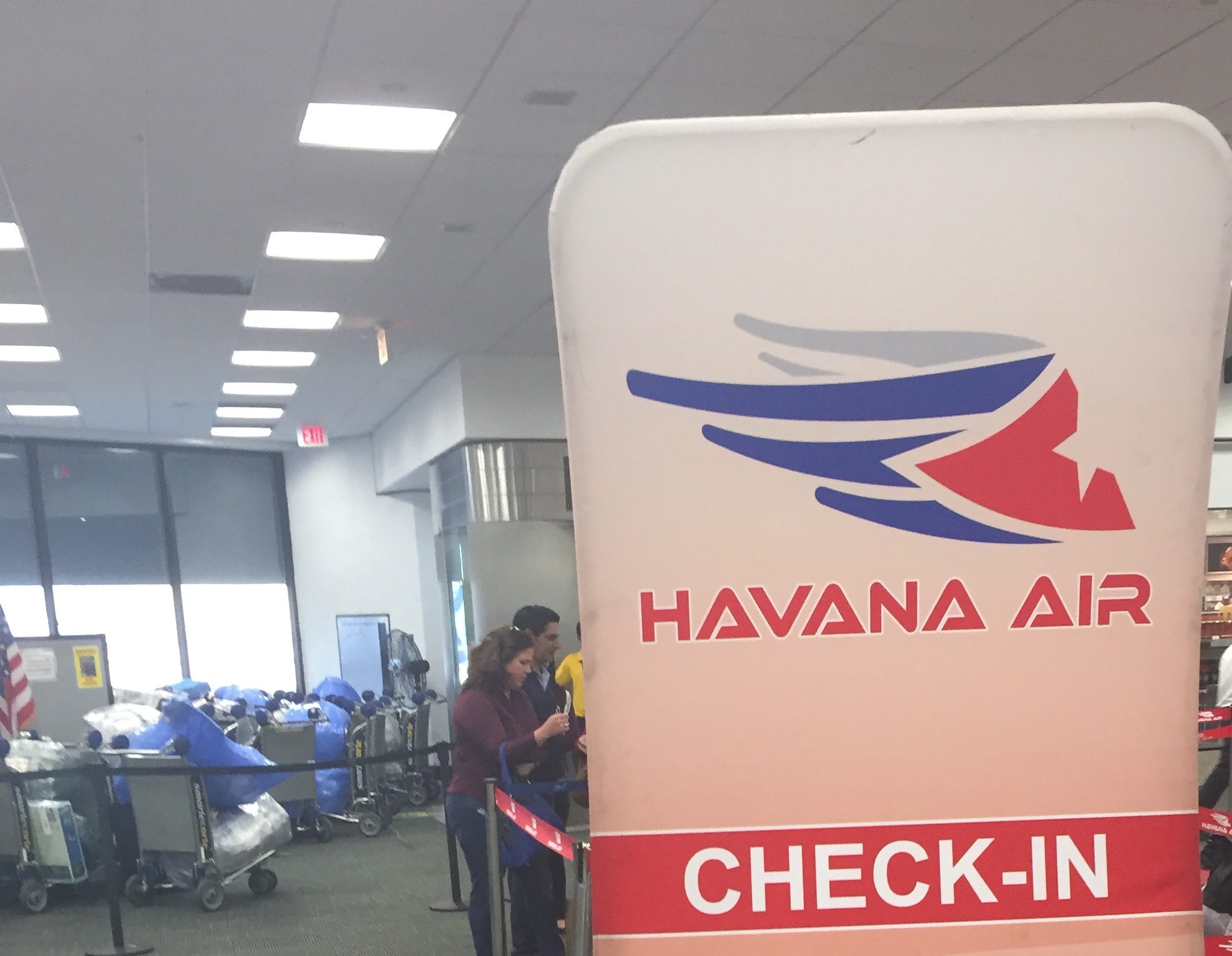Until August 31, 2016, when commercial airline service resumed, the way most people went to Cuba from the U.S. was on a chartered flight. You booked through an agency who arranged the flights and certified that you were flying for a designated reason. Their customers were mostly people with family living in Cuba, or those going on mission or school trips. You see, these were the people who could travel to Cuba freely under the embargo. In order to do so, you had to fit into one of the 12 categories allowed to travel there:
- Educational activities in Cuba for schools, including people-to-people exchanges open to everyone
- Professional research and professional meetings in Cuba
- Public performances, clinics, workshops, athletic and other competitions, and exhibitions in Cuba
- Religious activities in Cuba
- Humanitarian projects in Cuba
- Journalistic activities in Cuba
- Family visits to close relatives in Cuba
- Activities in Cuba by private foundations, or research or educational institutes
- Support for the Cuban people
- Exportation, importation, or transmission of information technologies or materials
- Certain authorized export transactions including agricultural and medical products, and tools, equipment and construction supplies for private use
- Official business of the US government, foreign governments, and certain intergovernmental organizations

The plane we took to Cuba in March 2016. Eastern still operates as a charter airline selling flights to Cuba through Havana Air.
In 2015, the restriction of certifying that your travel was for an allowed reason was significantly reduced. You no longer needed to submit your plans in advance; instead, you simply needed to state on a form that you were, in fact, traveling for one of the approved reasons.
(NOTE: Under the rules of the current administration, You can no longer travel to Cuba under the People To People category as an individual, and you can’t spend money at military-owned businesses)
We looked into a vacation to Cuba and booked an arranged trip through a travel concierge. Our flights, lodging, tour guides, drivers and even meals were all planned out and booked well in advance. You see, even then, demand from the United States and Europe was getting stronger and there was just not the infrastructure to support it in Cuba. They were not ready for a huge influx of new tourists, particularly in the towns outside of Havana. Most of the towns don’t have a huge number of hotel rooms and use “casa particulars” (“private houses” in English) to house many guests. Imagine it as a Cuban AirBNB.

This is what you might get if booking a casa particular outside of Havana
When U.S. airlines were allowed to fly commercial flights again in 2016, the airlines applied for 60 flights a week between Havana and various U.S. cities. The Department of Transportation eventually awarded 20 slots to various airlines for flights to Havana.
They also approved flights to the other airports in Cuba to basically anyone who applied. I count 155 flights a week that were approved to fly to Cuba. The only one of these applications that was denied was from Eastern Airlines, who was a charter and did not have a commercial airline registration.

Flights to all other cities in Cuba

Flights to Havana from U.S.
Having just flown to Cuba, I was wondering if the airline executives who applied for all of these flights had even flown to Cuba themselves, because they certainly didn’t seem to understand the market they were serving. All of these flights were going to have to be filled by U.S. citizens. If they all left full, there would be nowhere for the people to stay when they landed because there were not enough hotel rooms to take all of that capacity.
Starting as early as November 2016, the airlines realized they had severely overestimated the supply of flights needed. The announcements have been frequent and here’s what I see as the reductions and cancellations so far:
- American Airlines – Flights from Miami to Cienfuegos and Camagüey changed to smaller planes, reducing the number of seats by 40%.
- American Airlines – Cut flights from Miami to Holguin, Santa Clara and Varadero from twice daily to once daily.
- Jet Blue – Downgraded all flights to smaller planes. Routes with 200 seat planes were reduced to 150 seats and routes with 150 seat planes were reduced to 100 seat aircraft.
- Silver Airways – Suspended all services to Cuba as of April 22, 2017.
- Frontier Airways – Cancelled their Miami-Havana flight.
- Spirit Airways – Cancelled their Fort Lauderdale-Havana flight.
So, what happened? Obviously, the airlines added way too many flights to Cuba into the marketplace. However, I don’t think that was the real problem. I believe it was moreso they didn’t understand the customer who took these flights. I mean, you’d think when commercial flights started to Cuba, the charter businesses, who used to be the only ones flying in and out of Cuba from the U.S. would go away, yes? There would be no need for them since people could just go and buy a ticket to Cuba like to anywhere else, right? So why can I still go online and look up charter flights, which are still not only thriving, but still charging $400 round trip?
Flights to Cuba were never about leisure or business travelers. They were supply planes that happened to be carrying passengers. Here’s an example of the luggage charges for our charter flight to Cuba in 2016.
Total Amount of FREE OF CHARGE Weight: 44 lbs
Every pound after the first 44 lbs will be charged at $2 per lb.
Purse = FREE
Carry-on = FREE (In order for a carry-on suitcase to be accepted as a carry- on suitcase in these charter flights, it can only weigh up to 20 lbs)
Check-in suitcases: $20/each
Example:
You are traveling with a purse (6 lbs), a carry-on (19 lbs), and 1 check-in suitcase (30 lbs)
Your total weight is 55 lbs.
The first 44 lbs are free.
The difference is 11 lbs.
So you will be paying:
11 lbs x $2 = $22
1 Check-in Suitcase: $20
Also, at check-in, you pay $3 for Charter TSA Airport Fee.
So you pay: $22+20+3=$45
These $45 you can choose to pay cash or with a credit card. If you pay with a credit card, they will charge you a 5% ($2.25) fee
They weighed everything at the airport. Our small carry on. Our carry on luggage. Our suitcase. EVERYTHING. We ended up paying $174 extra for our bags. While this may seem like a lot, we weren’t the ones this policy was made for. It was for everyone else on the flight who was bringing anything and everything with them to Cuba. Plastic garbage bags filled with clothing and toys. Boxed up car parts, flat screen TV’s, tires (YES, TIRES), an air conditioner, and everything else that the people in Cuba need.

See the luggage carts to the left? That was only a portion of the supplies going with us to Havana on our flight.
In Cuba, you would need to go to the government store to buy many of these things. If you even have the money to buy them, the store might not have it in stock anyway. You can’t trust having it shipped there because it’s not dependable. So you get someone in your family or a friend or someone you know who is going to Cuba and you have them bring it with them. Even if the item is 100 pounds, that’s only 200 dollars. Well worth it so that your relatives have an air conditioner in the house.
I also need to add that those charges were only on the flight TO CUBA. For the flight home, they couldn’t be bothered to weigh your bags. Bring home whatever you want.
That’s why the commercial flights are not doing well. Could you imagine what United Airlines check in agents would do if someone came to the desk with 4 tires? I don’t think if you were even a top tier Premiere 1K flyer that you’d be able to check them in. Does each tire count as a bag? You’re only allowed 2 checked bags, or is that tires? They just don’t have the flexibility in their system to handle this. That’s why the charters still are around – because people who have been traveling to Cuba have been using them for years; they know the system, the airlines know the system, and the staff know the system.
Until the commercial airlines realize this, they can discount, downsize and cancel as many flights as they want, but they’ll never be able to get a grasp on the market. That is, until if/when Americans are able to travel and invest freely in Cuba. Then you’ll be able to stay at the newly built Hyatt Regency and have your Starbucks while sitting on the beach. But then it will just be another Caribbean island and we have plenty of those already.
Have you traveled to Cuba before or were you planning a trip? We’re interested to hear what you think. Comment here or write to us on Facebook or Twitter.
Like this post? We have plenty more just like it and would love if you decided to hang around and clicked the button on the top of this page to follow our blog and get emailed notifications of when we post (it’s usually just once or twice a day). Whether you’ve read our posts before or this is the first time you’re stopping by, we’re really glad you’re here and hope you come back to visit again!
